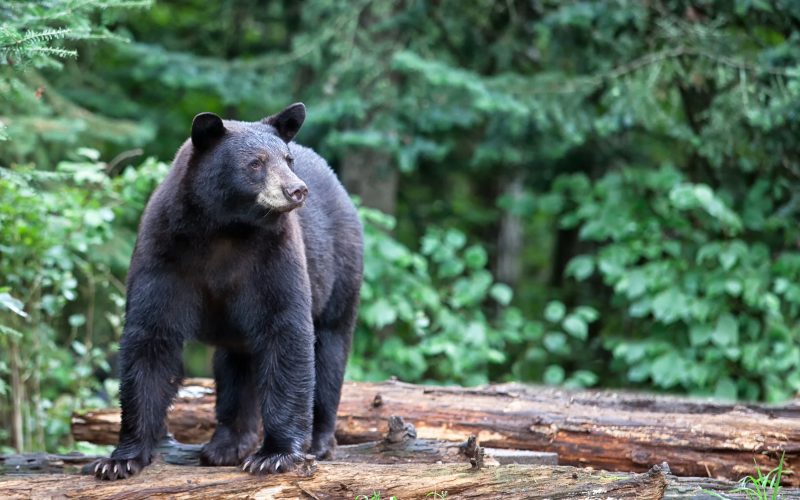
Courtesy Photo
Black bears are solitary animals, but even so, the carrying capacity of any given habitat may be good enough to support several bears in a couple square miles.
Before Arkansas was known as “The Natural State,” it was informally referred to as “The Bear State” because we had so many black bears (Ursus americanus). But by the 1930’s, bear populations were reduced so dramatically from habitat loss and overhunting that there were less than 50 black bears in the state. Yet black bear conservation and recovery in Arkansas has been a model for conservation.
Bears are omnivores and eat a variety of foods, but mostly plants like berries, nuts, fruits and seeds. They also eat fish, honey, bird’s eggs, dead animals, insects, grains and grasses. This helps them store up enough fat reserves to last through the winter. If you see claw marks on a rotting log, it could indicate that a black bear was searching for grubs. But if there are no distinct signs of a bear, it could mean that a pileated woodpecker has been pecking into the dead tree and weakened it enough for it to fall.
Black bears are solitary animals, but even so, the carrying capacity of any given habitat may be good enough to support several bears in a couple square miles. In the summer, males wander to find females, so a male’s home range is generally larger for this reason. After mating, the fertilized egg won’t start growing until late fall when females begin hibernation – but black bears are not true hibernators: their body temperature only drops a little, and they are easily disturbed from sleep despite not having to drink, eat or excrete wastes for up to six months!
A female’s body may reabsorb the fertilized eggs if she lives in a poor habitat or was not able to store up enough fat reserves to sustain both herself and the pregnancy throughout the winter. But if she successfully gives birth, black bear milk is very nutritious (unlike panda bear milk, which is not, due to their low-nutrient bamboo diet) so cubs grow fast. They stay with mom for about 18 months, then venture out on their own as yearlings.
Bears den in caves, tree cavities, rock crevices, large burrows or leafy brush piles, or even tree nests. If you happen across a bear in its den, be aware that you can easily awaken them. Context matters in bear confrontations with people. Females with cubs are more dangerous than solitary bears. If you surprise a bear accidentally, do not run. Bears can run faster than humans. Make lots of noise and back away slowly. Never get close to bears or feed them. We need them to be afraid of humans and not see us as food sources because they quickly become nuisance animals: “a fed bear is a dead bear.”
Although bears are often viewed as nuisance animals, they do help people and are an indicator species for the biodiversity of a habitat. Healthy bears, healthy habitat. They’re important in research on curing kidney disease, too. By learning more about these beautiful animals and what to do to stay safe in bear country, we can minimize conflicts and enjoy our natural state.
Amanda Bancroft is a Master Naturalist and volunteers with her husband Ryan for their solar-powered online educational center on how to make a difference with everyday choices at: www.RipplesBlog.org.










